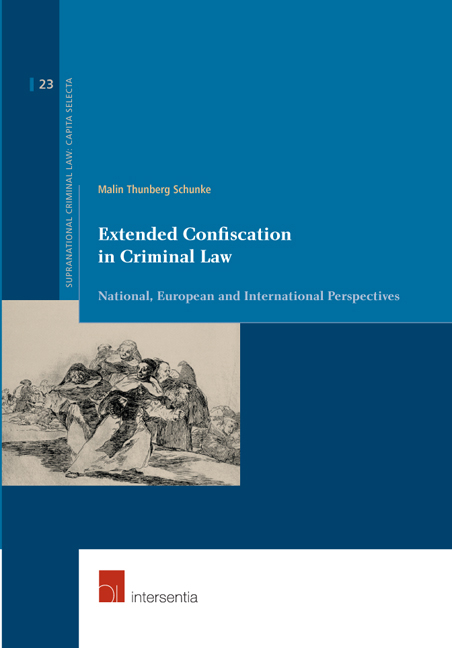Chapter 1 - Background and Scope of the Study
from Part I - Introduction
Published online by Cambridge University Press: 11 October 2018
Summary
GO FOR THE MONEY! : THE DEVELOPMENT AND EXPANSION OF A NEW LAW ENFORCEMENT STRATEGY
In the 1980s, law enforcement authorities, especially in the USA, started to focus more intensively on a strategy “to go for the money” and to pay increased attention to the financial sides of criminality. This was not a new method; already in the 1930s the prosecution of Al Capone for tax evasion was the result of such focus. However, in the 1980s a criminal justice policy with the purpose of taking away the financial incentive to commit crime was promoted more intensively as an effective strategy against serious crime. The rationale for this development was that the more traditional law enforcement methods, whereby criminal offences are investigated and the offender is punished by a criminal sanction, were not regarded as sufficient to deal with new and more advanced forms of criminality. It was argued that the strategy to take away illicit proceeds would lead to a general deterrence from crime, as the defendants would be prevented from benefitting financially from crime, and from reinvesting illegal assets into new criminality. In addition, society would be compensated as the State would be reimbursed the costs of combating crime. More far-reaching powers within a profit-based law enforcement strategy were furthermore motivated by the necessity to preserve public confidence in the white economy by sending out a signal that crimes should not pay. The following quotation from the English legislative process illustrates the “moral” arguments which were used in many States at this time:
Acquisitive crime affects everyone in society. Victims whose homes are burgled, whose cars are stolen, who lose their savings to fraudsters or are robbed in the street all have their lives inextricably altered. The rest of the law-abiding community, to a greater or lesser extent, lives in the fear of being victimised and suffers the indirect impact through rising prices, higher taxes and increased insurance premiums.
- Type
- Chapter
- Information
- Extended Confiscation in Criminal LawNational, European and International Perspectives, pp. 3 - 22Publisher: IntersentiaPrint publication year: 2017



